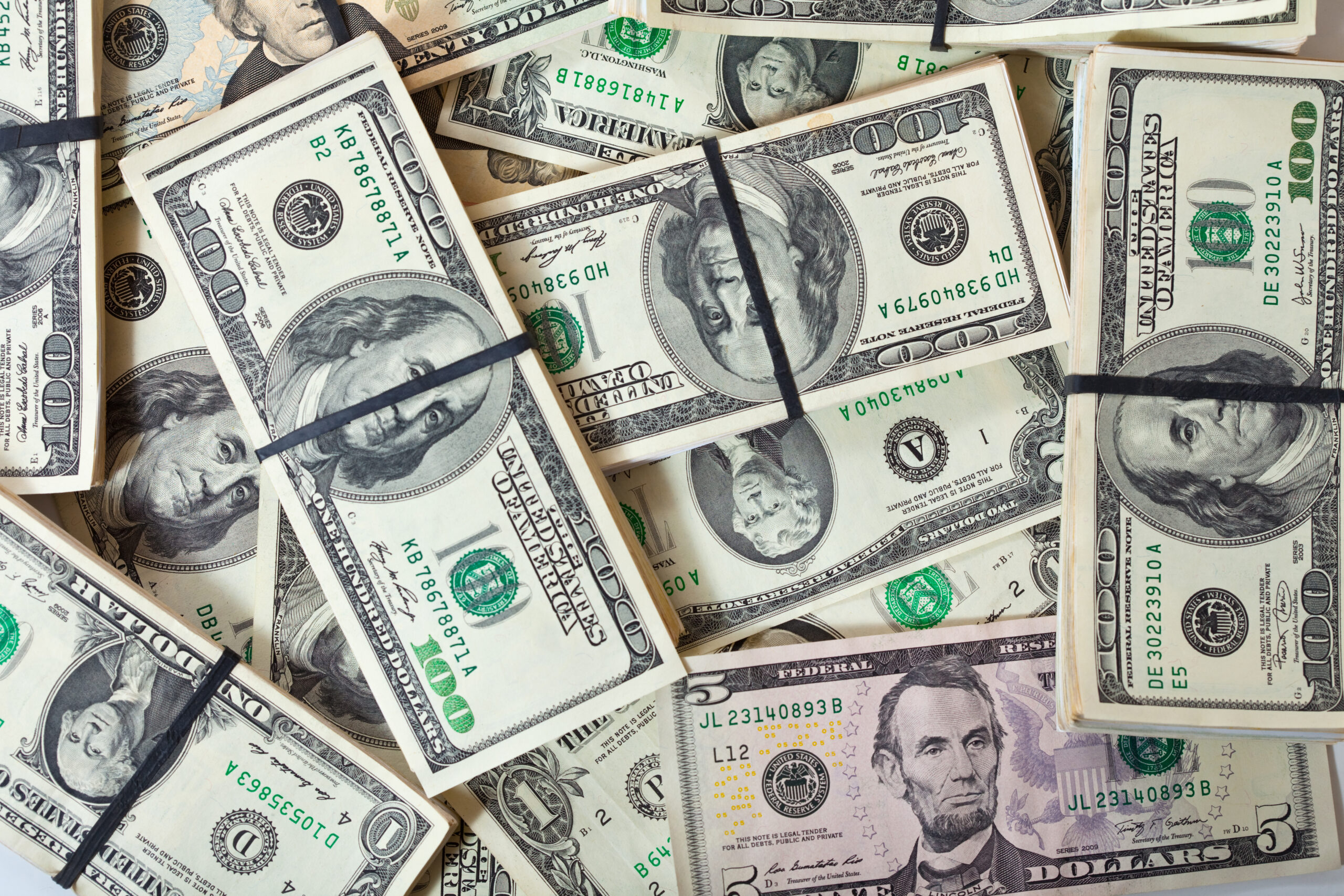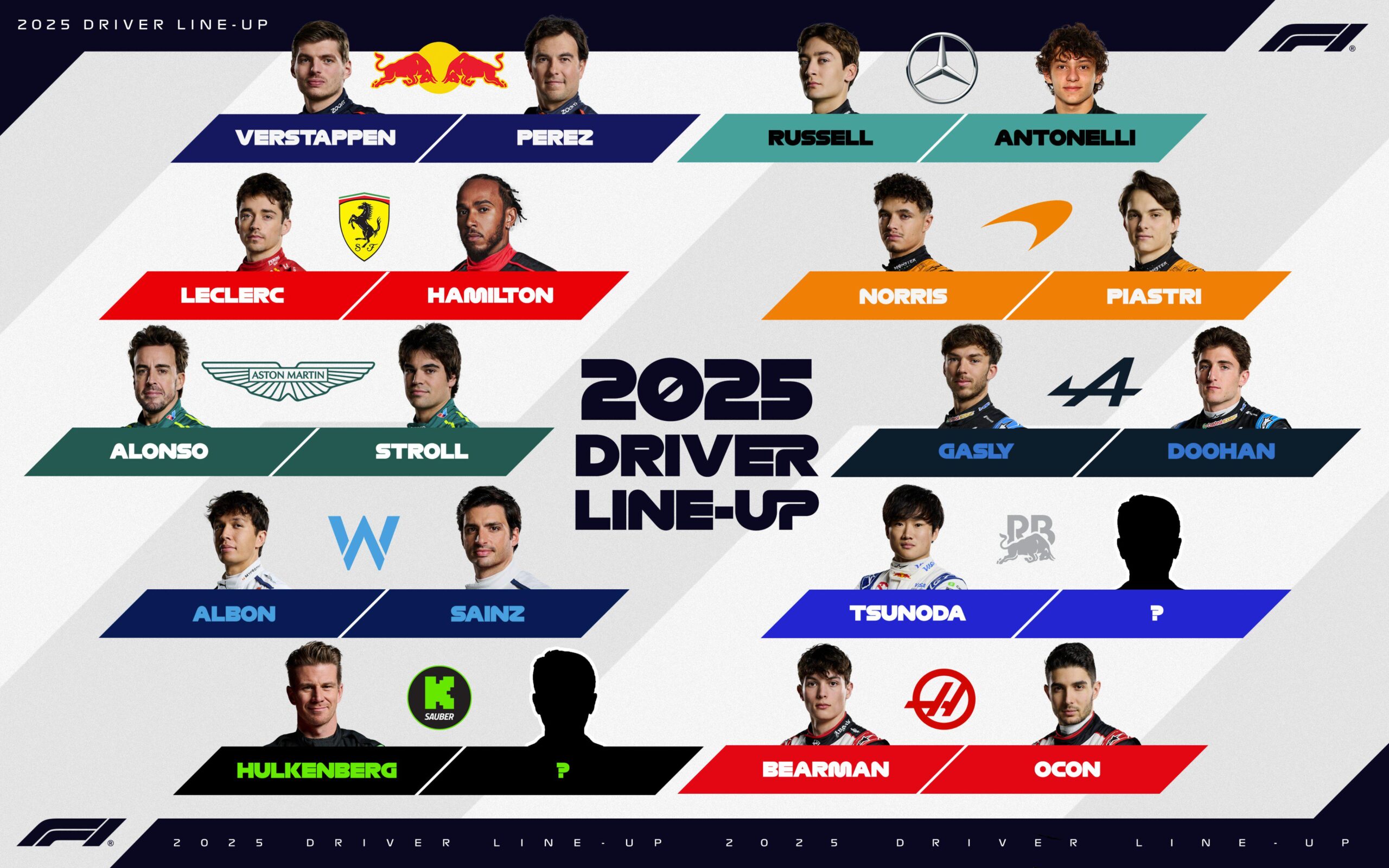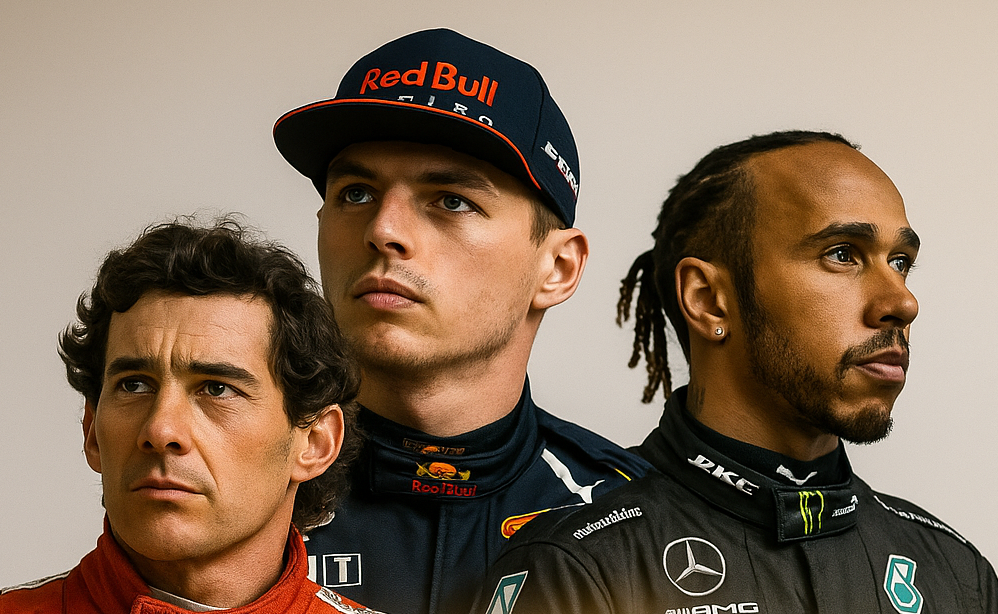Formula 1 driver salaries can capture plenty of attention. Some see the eye-popping figures flashed in the media while others wonder why teams are willing to invest such massive sums. There is more to these numbers than simple paychecks. Everything from team budgets to sponsorship deals shapes what a driver eventually earns. This article takes a closer look at how individuals in Formula 1, from established names to up-and-coming talent, are compensated for driving at the highest level of motorsport.
Explore the salary essentials
Teams in Formula 1 juggle various costs, which can reach up to 500 million dollars annually for top contenders (based on combined sponsor investment, prize money, and operational expenses). Driver salaries represent a portion of this overall spending, although the percentages vary by team. Some outfits commit as much as 10 percent of their budget to secure top-tier drivers.
At the heart of driver compensation is the base salary. This is often negotiated based on the driver’s past achievements, reputation, and marketability. The margin for negotiation can be substantial for a proven champion or a rising star with impressive results. It is common for top teams to pay higher salaries because they view elite drivers as integral to winning championships and boosting brand appeal.
Factors that influence wages
Experience and track record: A driver with multiple race wins, a proven ability to manage changing car dynamics, and consistent performance in qualifying sessions usually commands higher earnings.
Team finances: Well-funded teams such as Red Bull, Mercedes, or Ferrari can allocate bigger budgets to hire and retain marquee drivers.
Negotiation tactics: Agents and managers often push for better deals by highlighting a driver’s popularity or technical feedback capabilities. A strong negotiator can secure additional perks such as hospitality suites for personal sponsors.
Marketability: Fan-favorite drivers with significant social media followings and broader celebrity status are prime endorsements targets. This popularity helps teams bring in external sponsors.
Cost cap versus driver pay
Formula 1 introduced a cost cap in 2021 to contain escalating team budgets. Despite this limit on operations, driver salaries do not fall under the same restriction. Large teams continue to negotiate freely, which serves to preserve the star power that draws in global audiences. A top-level driver can elevate a team’s performance, generate publicity, and attract vital sponsors, making their salary a worthy long-term investment.
Consider performance bonuses
Beyond a base salary, Formula 1 drivers often enjoy lucrative performance bonuses. These payments kick in when certain milestones are met, such as race wins, podium finishes, or a certain threshold of championship points. For example, Max Verstappen reportedly earned a bonus of $25,000 for every point he scored during the 2018 season. Such incentives encourage drivers to push for results that help the team in the constructors’ championship.
Bonuses also factor in additional revenue streams when drivers hit marketing targets or appear at specific sponsor events. In some contracts, finishing ahead of a teammate or outqualifying them a certain number of times can trigger bonus payments too. Although exact details are rarely broadcast, bonuses remain an important motivator.
How bonuses add up
Race win multiplier: A driver may receive a bonus for each victory, often increasing the total salary by millions if those wins lead to a championship.
Podium rewards: Smaller payments compared to race wins, but a consistent run of podium finishes can quickly accumulate.
Championship clause: Securing a drivers’ title can unlock a hefty lump sum in addition to everything else.
Team performance share: Some drivers negotiate a cut of the prize money that the team earns. This arrangement allows both driver and team to celebrate strong results together.
Look at top salaries
The highest-paid drivers showcase the extremes of Formula 1 driver salaries. In 2025, Max Verstappen earns an estimated $65 million annually, with Lewis Hamilton close behind at $60 million. Charles Leclerc, Fernando Alonso, and Lando Norris occupy other top-tier slots, reflecting their status on the grid.
Driver pay is not limited to a single number on a contract. Endorsements, personal merchandise sales, media appearances, and performance add-ons push actual yearly earnings even higher. Many of these stars dedicate significant time to brand partnerships, leveraging their worldwide fan bases to maximize value.
Leading annual salaries in 2025
| Driver | Team | Salary (USD $) |
|---|---|---|
| Max Verstappen 🇳🇱 | Red Bull | $65 m |
| Lewis Hamilton 🇬🇧 | Ferrari | $60 m |
| Charles Leclerc 🇲🇨 | Ferrari | $34 m |
| Fernando Alonso 🇪🇸 | Aston Martin | $20 m |
| Lando Norris 🇬🇧 | McLaren | $20 m |
| George Russell 🇬🇧 | Mercedes | $15 m |
| Carlos Sainz 🇪🇸 | Williams | $10 m |
| Pierre Gasly 🇫🇷 | Alpine | $10 m |
| Alex Albon 🇹🇭 | Williams | $ 8 m |
| Nico Hülkenberg 🇩🇪 | Sauber | $ 7 m |
| Esteban Ocon 🇫🇷 | Haas | $ 7 m |
| Oscar Piastri 🇦🇺 | McLaren | $ 6 m |
| Lance Stroll 🇨🇦 | Aston Martin | $ 3 m |
| Yuki Tsunoda 🇯🇵 | Racing Bulls | $ 2 m |
| Kimi Antonelli 🇮🇹 | Mercedes | $ 2 m |
| Gabriel Bortoletto 🇧🇷 | Sauber | $ 2 m |
| Oliver Bearman 🇬🇧 | Haas | $ 1 m |
| Liam Lawson 🇳🇿 | Red Bull | $ 1 m |
| Jack Doohan 🇦🇺 | Alpine | $0.5 – 1 m |
| Isack Hadjar 🇫🇷 | Racing Bulls | $0.5 – 1 m |
Figures vary based on contract length, bonus clauses, and the driver’s leverage at the negotiating table. Even so, the salaries in this table show how select individuals can dominate financial headlines, especially compared to less established rivals.
Sources : https://motorsporttickets.com/blog/f1-driver-salaries-how-much-formula-1-drivers-earn/

Review sponsorship impact
Sponsorships represent a major piece of the Formula 1 puzzle. They influence more than just car livery and team budgets. Drivers with particularly strong personal brands can bring direct sponsorship money to a team. This scenario has historically included “pay drivers,” whose family wealth or external backers pay teams significant sums for a guaranteed seat.
Sponsorships give the driver and the team added financial stability. In some cases, it determines whether a driver can transition from a smaller team to a more competitive one. Popular drivers like Lewis Hamilton attract global sponsors, generating millions in additional revenue. These deals often include personal endorsements, collaborative merchandise lines, and brand ambassador roles that expand a driver’s off-track presence.
Pay driver phenomenon
Certain drivers have joined the grid by bringing up to $20-$30 million in sponsor money for smaller teams.
Pastor Maldonado famously brought $29 million to Williams in 2012, a major factor in securing his seat.
While some pay drivers have strong racing credentials, critics argue that talent should outweigh finances when awarding seats.
Understand junior categories
Not everyone in motorsport starts at the top. Junior categories such as Formula 2 (F2) and Formula 3 (F3) feed future talents into Formula 1. However, the salary dynamics in these series differ considerably. Many F2 teams operate on a “pay-to-drive” model, meaning a driver must bring their own funding to secure a seat.
Drivers in F2 might earn between €50,000 to €150,000 per season, but that comes mostly from personal sponsorships rather than a team salary. It can cost aspiring drivers €1.5 to €2 million per season to compete. This structure cements the importance of external backers to advance from the junior ranks to Formula 1.
F2 and F3 compensation outlook
F2: Drivers often face big expenses, with total season costs running into the millions. A strong showing at this level can catch the attention of F1 teams that are willing to invest in young prospects.
F3: These drivers can make between $80,000 and $200,000, though many rely heavily on sponsors or family support.
Transition to F1: Financial returns can multiply dramatically. A top rookie in F1 might see an annual salary of $1 million, dwarfed by the tens of millions that seasoned champions command.

Examine team budgets and strategies
Formula 1 is not just about putting the fastest car on track. It is a business that demands strategic spending. An intricate balance exists between investing heavily in technical development, attracting reliable sponsors, and signing high-caliber drivers. Teams like McLaren have at times spent over $500 million in a season (adjusted for inflation), including driver-related costs.
Part of the rationale behind such high spending is the enormous global reach of the sport. Millions of fans tune in for each Grand Prix. A skillful driver can transform a team’s performance, which boosts merchandise sales and media coverage. Marginal gains in the constructor standings also translate to bigger shares of the overall prize fund.
Spending cycle
Initial outlay: Teams budget for car upgrades, staff salaries, factory operations, and advanced research.
Multi-year contracts: A stable driver lineup can offer a consistent feedback loop for car development. Long-term deals also allow sponsors to plan campaigns around drivers.
Return on investment: Strong results lead to more prize money and a higher profile among fans, which in turn can bring fresh sponsorships.
Highlight the role of endorsements
Drivers at the top of the sport are often seen as global icons, attracting brands that range from luxury apparel to tech gadgets. Endorsement deals can sometimes surpass driver base salaries. For example, Lewis Hamilton’s affiliations with popular brands contribute millions on top of his $60 million base.
These partnerships benefit all parties involved. A sponsor gains representation by a high-profile athlete, and the driver broadens their off-track resume. Meanwhile, the team benefits from greater publicity, especially if the deal aligns with team sponsors or brand values. This synergy keeps growing when a driver wins races, sets records, or engages with a passionate fan following on social media.
Common endorsement channels
Apparel and footwear brands
Watches and luxury accessories
Personal technology products
Automotive-part collaborations
Joint charitable initiatives
Compare rookies to veterans
The difference in earnings between a first-year Formula 1 driver and a multiple world champion can be massive. Rookies might earn as little as $1 million annually, while a veteran like Fernando Alonso can earn $20 million in the same season. Teams presume that a seasoned driver comes with enhanced racecraft, consistency, and the capacity to handle intense pressure.
Yet a talented rookie can sometimes negotiate a more competitive pay package. Drivers who dominate in junior categories, or show rapid improvement, make themselves indispensable to team strategies. An example is George Russell, whose initial rookie contract was modest but later escalated to $15 million per year with Mercedes once he proved his worth.
Advantages of established drivers
Consistent performance from race to race
Fewer rookie mistakes and better adaptability to car setup
Increased media spotlight and potential sponsor deals
Ability to guide young teammates, improving team morale and results
Investigate personal merchandise
Another revenue stream for a Formula 1 driver lies in personal merchandise sales, including branded clothing, accessories, and digital content. Drivers like Max Verstappen and Lewis Hamilton have loyal fan communities that purchase products tied to their name or race number.
Merchandise might not match base salary figures, but it can still be a meaningful addition over the course of a season. Successful drivers often have official stores that operate at race circuits, team headquarters, or directly online. Licensing deals also come into play, allowing third parties to use driver images on products like headphones, scale-model cars, and phone cases.
Common merchandise options
Caps, hoodies, and T-shirts with driver logos
Limited-edition collectibles like autographed helmets
Virtual items, encouraging fans to engage online
Collaborative lines with fashion or lifestyle brands
Note the junior-to-F1 leap
For many young racers, jumping from F2 to Formula 1 can be life-changing. Salary figures rise by a factor of ten or more, putting a newcomer on par with other professional sports leagues. Once in F1, a driver’s proximity to prime sponsors opens doors to endorsement possibilities and performance bonuses. Even the lowest-paying F1 teams still offer financial stability beyond what most junior categories can match.
However, the road to those rewards remains challenging. Funding for junior series is critical. Without deep-pocketed supporters, many hopefuls get stuck or exit the motorsport path altogether. Some talented drivers never make it to F1 purely due to the costs required in the early stages of development.
Frequently Asked Questions
1. Why don’t driver salaries fall under Formula 1’s cost-cap rules?
The financial cap only limits team-operating expenses such as car development, staff wages, and factory costs. The FIA and teams deliberately excluded driver pay so that star power and the sponsors it attracts remains uncompromised. Teams can therefore offer premium contracts to secure (or keep) race-winning talent.
2. How much of a top team’s budget is typically spent on drivers?
It varies, but leading outfits may allocate 8–12 % of their annual budget to salaries and performance bonuses. For a team spending the full $500 million, that can translate to $40–60 million shared between two drivers.
3. Do rookies ever receive performance bonuses like veterans?
Yes though the thresholds are usually lower. A newcomer might earn extra for scoring first points, reaching Q3 in qualifying, or out-qualifying a team-mate ten times in a season. These clauses motivate rapid development without inflating the base salary.
4. Can a “pay driver” still earn a salary from the team?
Occasionally. If the sponsorship package a driver brings exceeds what the seat costs the team, management may still add a modest salary (often $250k–$1 million) as a goodwill gesture, plus travel expenses and appearance fees.
5. How do endorsement deals compare with on-track income for megastars like Lewis Hamilton or Max Verstappen?
Hamilton’s reported $60 million base is often matched or even eclipsed by off-track earnings. Multiyear partnerships with premium fashion, telecom, and watch brands can add $35–45 million annually. Similar figures apply to Verstappen’s personal deals with Dutch telecoms, sim-racing hardware, and energy-drink spin-offs. Endorsement money is less predictable than a salary, but it scales rapidly with championships, social-media growth, and global activations.
6. Why do teams sometimes commit to long, high-value contracts (e.g., five years for $200 million) instead of renewing annually?
A long-term deal secures more than driver services; it stabilises technical feedback loops, facilitates multi-season car development, and reassures sponsors that a marquee name won’t switch rivals mid-cycle. For the driver, it guarantees income and may include escalating bonuses tied to constructors’ titles. When both sides expect an extended window of competitiveness think Ferrari-Leclerc or Red Bull-Verstappen locking in big money early can actually save costly bidding wars later.




